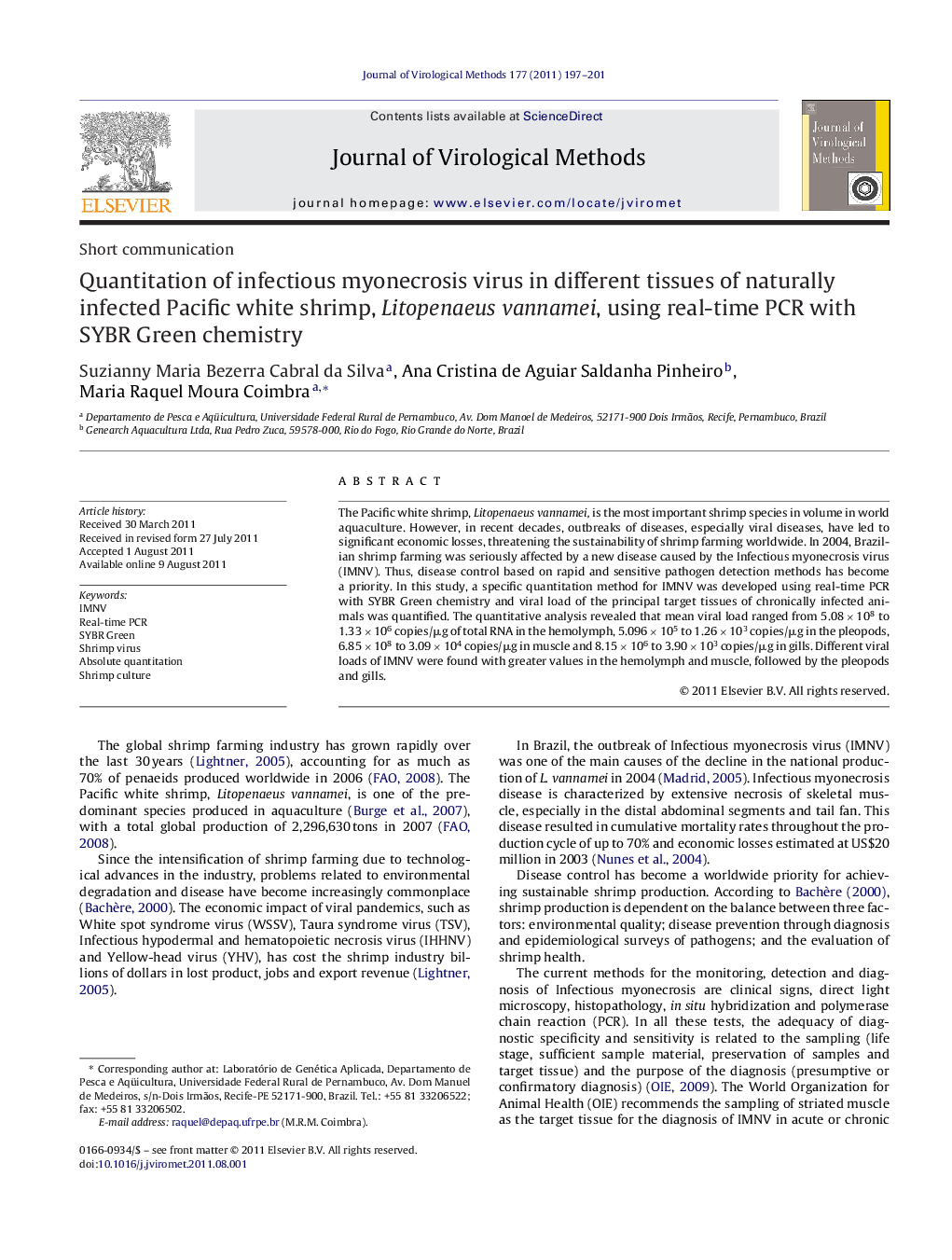| Article ID | Journal | Published Year | Pages | File Type |
|---|---|---|---|---|
| 3406896 | Journal of Virological Methods | 2011 | 5 Pages |
The Pacific white shrimp, Litopenaeus vannamei, is the most important shrimp species in volume in world aquaculture. However, in recent decades, outbreaks of diseases, especially viral diseases, have led to significant economic losses, threatening the sustainability of shrimp farming worldwide. In 2004, Brazilian shrimp farming was seriously affected by a new disease caused by the Infectious myonecrosis virus (IMNV). Thus, disease control based on rapid and sensitive pathogen detection methods has become a priority. In this study, a specific quantitation method for IMNV was developed using real-time PCR with SYBR Green chemistry and viral load of the principal target tissues of chronically infected animals was quantified. The quantitative analysis revealed that mean viral load ranged from 5.08 × 108 to 1.33 × 106 copies/μg of total RNA in the hemolymph, 5.096 × 105 to 1.26 × 103 copies/μg in the pleopods, 6.85 × 108 to 3.09 × 104 copies/μg in muscle and 8.15 × 106 to 3.90 × 103 copies/μg in gills. Different viral loads of IMNV were found with greater values in the hemolymph and muscle, followed by the pleopods and gills.
